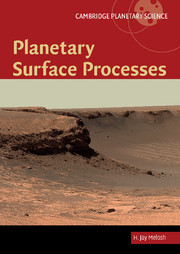8 - Slopes and mass movement
Published online by Cambridge University Press: 05 June 2012
Summary
Imagine a landmass upon which no rain falls, no rivers flow, no glaciers form, no waves beat, no winds blow. Let chemical and mechanical distintegration disrupt the rocks, and gravity exert its downward pull. On such a landmass earth and rock will move ceaselessly from higher to lower levels, slopes will soften, relief will fade. Given time enough, the whole will be reduced to a featureless plane of disintegrated rock debris.
Douglas Johnson, foreword to the book Landslides and Related Phenomena by C.F.S.Sharpe, 1937In the summer of 1935 young C. F. S. Sharpe undertook an excellent adventure. Having acquired a car, he drove 16 000 miles through 28 American states and 3 Canadian provinces. His quest was unusual: He was out to demonstrate that mass movement of debris over the Earth’s surface is an important geological process. After he returned he wrote up his observations in a book (Sharpe, 1938) that forms the basis of our modern understanding of gravity-driven mass motions for the evolution of the Earth’s landscape. The current era of space exploration has greatly broadened the reach of the processes he described: Mass motion is important on bodies ranging from tiny asteroids and comets only a few kilometers in diameter up to the largest moons and planets. Its action has been observed on every solid body in the Solar System.
- Type
- Chapter
- Information
- Planetary Surface Processes , pp. 319 - 347Publisher: Cambridge University PressPrint publication year: 2011
- 2
- Cited by

